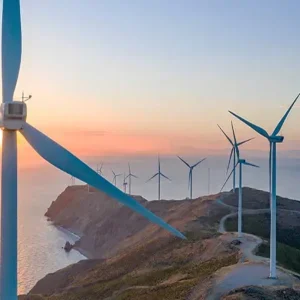
A group of large investors have launched the first-ever framework for net-zero investing today (5 August).
The “Net-Zero Investment Framework” provides a practical blueprint for investors to maximise the contribution they make in tackling climate change and achieving net-zero emissions globally by 2050.
It has been developed by more than 70 global investors, representing more than $16tn in assets, through the Institutional Investors Group on Climate Change (IIGCC).
The primary objective is to ensure investors can decarbonise investment portfolios and increase funding for climate solutions, in a way that is consistent with a 1.5C net-zero emissions future, as laid out in the Paris Agreement targets.
The IIGCC’s CEO, Stephanie Pfeifersaid, countries, cities and companies around the globe are committing to achieve the goal of net-zero emissions and “investors need to show similar leadership”.
“The willingness is there, but until now the investment sector has lacked a framework enabling it to deliver on this ambition,” she added.
“As we work towards investors adopting the framework before the end of the year, the race is now on in the run-up to COP26 for asset owners and managers to show they will be net-zero investors.”
How will the net-zero investing framework deliver?
The framework provides a comprehensive set of recommended actions, metrics and methodologies, which following finalisation, will seek to enable both asset owners and asset managers to effectively become “net-zero investors”.
The IIGCC said an “investment strategy” led approach, supported by concrete targets set at portfolio and asset level – combined with smart capital allocation, and engagement and advocacy activity – will ensure investors can maximise their impact in driving real-world decarbonisation.
There are four asset classes – sovereign bonds, listed equities and corporate fixed income, and real estate – covered by the framework, with others to follow.

The initial framework has been published today for consultation and input from a wide range of stakeholders will be sought to help validate and strengthen the work that has so far been conducted by investors.
There will be five investors — including the Church of England Pensions Board — that will put the framework to the test, by modelling its impact across the performance of their real-word portfolios that are collectively valued at $1.3tn.
The IIGCC said the results of this analysis will be launched with the final framework, which is expected to be released before the end of 2020.
Framework provides a basis to deliver investors’ net-zero commitments
Adam Matthews, director of ethics and engagement at the investment team of the Church of England Pensions Board described the process of setting a long-term net-zero target as the “easy part”.
“The challenge is to have a credible and transparent framework that enables your fund to convert intent into practical decisions and action,” he added.
“The Church of England Pension fund, which serves the interests of 40,000 future beneficiaries, is globally invested across multiple asset classes and this framework provides us with a basis to deliver our commitment to be net-zero aligned.”
The framework is intended to be adopted and implemented by investors following its finalisation, according to the IIGCC.
It added that more detail on this process will be shared across the coming months and will “help build momentum” in the run-up to the UN’s COP 26 climate talks, which will be held in Glasgow next year.
The framework sets out five core components that help define a “net-zero investment strategy” — covering objectives and targets, strategic asset allocation and asset class alignment, alongside policy advocacy, investor engagement activity and governance.
Taken in combination, the IIGCC said this enables investors adopting the framework to be aligned with and contribute to the delivery of the Paris Agreement.






